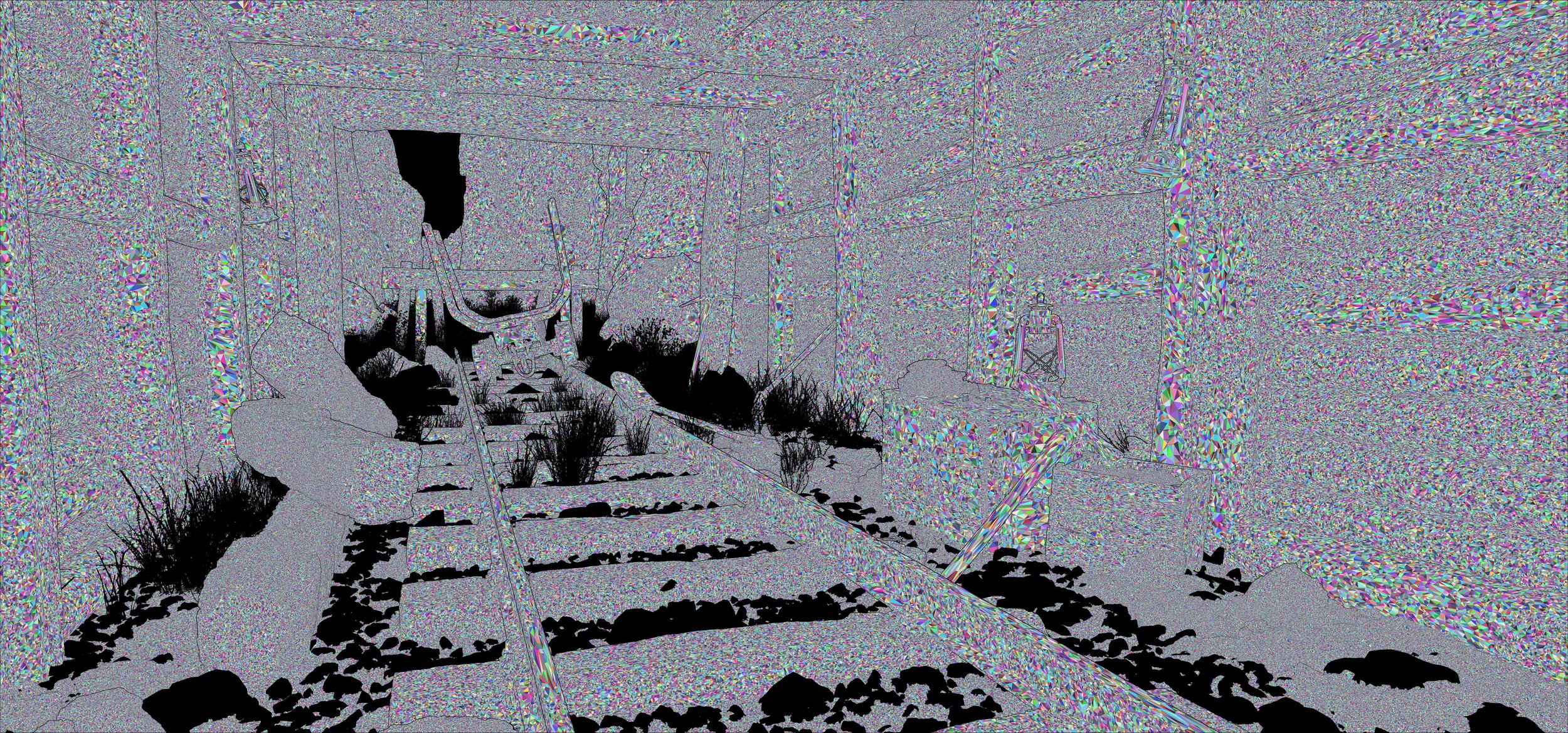Environment Art
Adriatica: A study in virtual production
This Project pushed the skillset of my entire production team and it was fascinating to see how the project came together after starting it out as a research and development project.
We began this process by taking a team field trip from our studio over to Adriatica Village in McKinney Texas for a scouting trip where we planned out camera routes and then broke out those camera paths into asset lists and surface materials that needed to be acquired.
On our second field trip out to Adriatica Village our team worked on using a set of 4 DSLR cameras to capture the entire scene with photogrammetry, tasking individual technical artists with capturing the assets that had been laid out in the camera paths including the Adriatica tower, tower patio, side wall, and tower stairs.
Originally, we planned to use photogrammetry assets for the rocks, foliage, and surface materials but we ended up seeing the promise of using Megascans to better focus on our original intent of recreating the central Adriatica tower that we wanted to focus on.
Credits
Bailey Crider
Camera Paths, Asset Acquisition, Model Cleanup, Final Assembly, Rendering
Mayson Bray
Asset Acquisition, Model Cleanup, Surfacing
Rochelle Shadow
Asset Acquisition, Model Cleanup, Surfacing, Final Assembly
Sam Leeke
Look Development, Asset Acquisition, Model Cleanup, Final Assembly
DIY Megascans
Collected render of DIY Megascan assets
One of these images is all real-life photos, and one of these images is all real-time renders of the same digitized assets from inside Unreal Engine 5.
Rust-Oleum Spray Can and a Damaged Rusty Shovel
A small piece of wood on a bed of gravel
A pile of large dark rocks and a fragment of wood in dirt with pebbles
A small pile of gravel and a City of Frisco Manhole
An oblong pile of gravel and a small pile of wood fragments
This set of assets was produced by me and team of Technical Artists, we took a field trip to a nearby railyard in Frisco Texas after planning out a capture schedule.
We scouted a series of assets around the railyard and returned twice over the next two days during the mid-morning before it got too hot.
Using a pair of Canon EOS Rebel SL3 cameras, an EOS 5D Mark IV camera, a Calibrite ColorChecker Passport Photo 2, and photogrammetry scale bars we captured each asset with between 70 and 200 images.
We generated color profiles from the color checker in the RAW image files, color corrected and converted the images in Photoshop, aligned and generated the models in Reality Capture, and finally moved onto model cleanup and texturing.
While our goal was to recreate Megascans models from Quixel it proved to be quite a bit more intricate than we expected, while
Credits
Bailey Crider
Asset Acquisition, Model Cleanup, Reconstruction, Surfacing, Final Assembly, Rendering
Mayson Bray
Look Development, Asset Acquisition, Reconstruction, Model Cleanup, Surfacing
Rochelle Shadow
Asset Acquisition, Reconstruction, Model Cleanup, Surfacing, Final Assembly
Sam Leeke
Asset Acquisition, Model Cleanup, Reconstruction, Surfacing, Final Assembly
The Mines Project: UE5 & Virtual Production
Fully lit final render of the Abandoned Mine Project
Unlit final render of the Abandoned Mine Project
Wireframe final render of the Abandoned Mine Project
This set of nine images shows each of the individual render layers in Unreal Engine 5. Together they make up the complete image you see at the top.
Behind The Scenes
This Abandoned Mines Project was an internal development project for my whole team where we specifically wanted to focus on our environmental storytelling and visual development skills. To focus especially on those two skills areas, we decided to use Megascans from the Quixel Megascan library and build our scenes inside of Unreal Engine 5 so lighting and polygon counts were less of a problem.
As a team we produced a basic Whitebox scene that could be uploaded to our Perforce server where each of us could work in our own Unreal level in-engine and easily cross compare our work to help further improve each other. Using about a dozen different Megascan assets and packs we decorated the Whitebox model and set up camera angles and paths for each individual scene could be shown off as the artist wanted.
I chose to build a straightforward scene that tried to convey the feeling of a sudden departure, I’ve always found suddenly abandoned environments like The Last of Us to be incredibly interesting because it raises so many questions about how people lived their lives and why they left their belongings the way they did.
Megascan Asset Credits:
Worn Wooden Beam - Asset ID: tgnidj2fa
Modular Mine Tunnel Kit - Asset ID: wcckeezdw
Mine Cart 1 - Asset ID: vcyjedsfa
Mine Cart 2 - Asset ID: ueujednfa
Modular Railway Track Buffer - Asset ID: ufekab3dw
Stakes and Wedges Pack - Asset ID: tl2effiva
Modular Railway Track - Asset ID: ufekaeedw
Wild Grass - Asset ID: vdilbaiia
Yellow Rabbitbrush - Asset ID: vdtlcbjia
Dead Shrubs - Asset ID: vdknafgha
Volcanic Ground - Asset ID: qcjrH
Stones and Pebbles Pack 1 - Asset ID: ukhkbediw
Stones and Pebbles Pack 2 - Asset ID: ukinbhhiw











